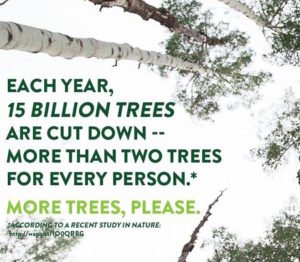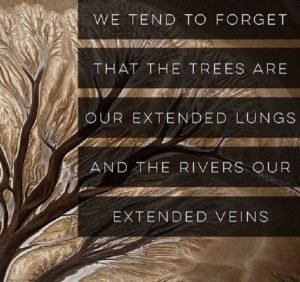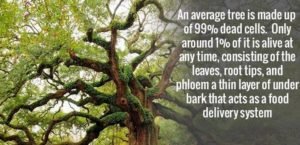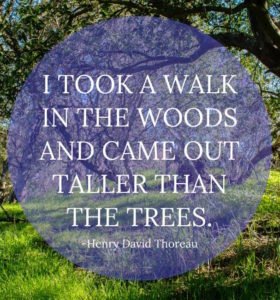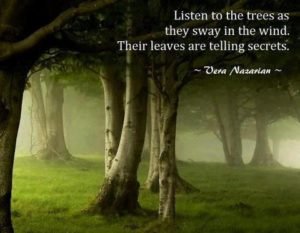by Susan Dean | Feb 5, 2018 | Trees
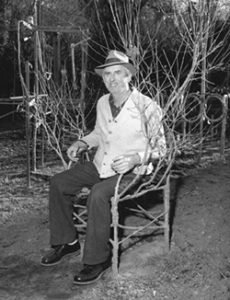
Axel N. Erlandson (1884-1964)
“Living Tree Artist!”
Axel Erlandson was the third son of Swedish immigrants. In the early 1900’s his family moved from Minnesota to a farm in central California. He married his wife, Leona, in 1914 and they had one daughter, Wilma. Erlandson was a bean and alfalfa farmer who started grafting and shaping tree trunks. Bending four sycamores on a six-foot square plot into a cupola, he named it the Four-Legged Giant and encouraged by this initial success, he went on to create more complex designs, working from drawings. These trees represent one of the most visible demonstrations of the love of nature by man.
Erlandson wove his wonders with threads of living wood. Straight tree trunks became complex and compound designs in shapes like hearts, lightning bolts, basket weaves and rings. Erlandson claimed to be divinely inspired and spent over 40 years of his life shaping and grafting the bodies and arms of these full-sized trees. He could control the rate of growth, slowing it down or speeding it up to blend his designs to perfection.
He experimented with box elders, birch, ash, elms and weeping willows, using young and flexible branches bent into loops, hearts, chairs, spiral staircases, zigzags, rings, birdcages, towers, picture frames and ladders, held in place with a framework for several years until they were capable of self-supporting. The process included grafting and pleaching, as well as other specialist techniques he called “trade secrets.” Erlandson would not tell anyone his secrets of arbor sculpture. If someone asked he would just say that “he talked to the trees.”
As Erlandson’s interest grew from hobby to passion, so did the number of ever more complex experiments he undertook. His arbor sculpture involved wire, tape, steel and guides, and his trees took years to assume their final shapes. In later life, he regretted never having taken on an apprentice. As he grew older and frailer, he was unable to attend and care for his trees.
No other figure today or in known history went so far in demonstrating the potential that trees have to offer. With only a fourth grade education and a strong will to teach himself, Axel Erlandson’s work “set the bar” for all aspiring arbor sculptors. Axel taught himself all he needed to know about auto repair, carpentry and mathematics. He also loved to ride his motorcycle, keeping detailed records of the miles he covered. Erlandson’s lack of formal education may have been a blessing. He was free to experiment without preconceptions allowing the trees themselves to act as his teachers.
Erlandson crafted about 28 sculptured trees at his farm near Turlock, California. By the mid-1940’s, Erlandson was ready to retire from farming and concentrate his efforts on his trees. In 1946, after a vacation with his wife and daughter in Santa Cruz, he purchased a ¾ acre parcel in nearby Scotts Valley, California and transplanted about a dozen of his living trees, some were over 20 years old.
In 1947, the Tree Circus opened for business with a 25-cent admission fee. The park opened with a sign, “See World’s Strangest Trees Here.” He planted a Sequoia gigantea sapling next to it. That sapling today has a circumference of over 20 feet (6.10 m.). On his daughter’s suggestion, the sign was changed to the Tree Circus. The Tree Circus appeared often in Ripley’s “Believe It or Not!” during the late 1940’s and 1950’s. It also appeared in Life Magazine and other national and international publications. Erlandson devoted his life to the trees, and delighted in showing them to passing motorists who stopped by.
In the early 1960’s, Erlandson tried unsuccessfully to have the state parks take over the management of his enterprise. In 1963, due to poor health, he sold the property along with the trees. At that time, about 74 of his arboreal sculptures remained. During the next twenty years the trees suffered from neglect. In 1977 Robert Hogan purchased the property for commercial development and the trees were scheduled to be bulldozed. Through the efforts of Mark Primack many of the trees were saved. Primack was quoted as saying “I know of no other single person who has taken ornamental grafting to such an extreme, it is not just an oddity. It demonstrates an intriguing option for improving our environment by creating an absolutely unique space of living sculpture. ”
His campaign to save the trees caught the attention of Michael Bonfante, a nurseryman, tree lover and owner of Nob Hill Foods. In 1984, he purchased the collection of 25 circus trees. The Bonfante Gardens Theme Park opened in 2001 with the living sculpted trees as one of the attractions. The legacy of Axel Erlandson lives on at the Bonfante Gardens Theme Park.
He died at the age of 79. Considering his tremendous success with his trees he humbly pointed out that he was unable to “carry it to near its ultimate possible attainment.” Clearly he thought that the potential went well beyond what he accomplished, Axel Erlandson’s Circus Trees will continue to awe children as well as adults who can appreciate the time and talent involved in creating this tribute to nature.
by Susan Dean | Feb 5, 2018 | Plants, Trees
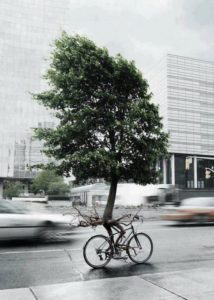
A Tree Exploration
1. The center of the tree is the heartwood. Have one student stand to portray the heartwood and flex and tighten their muscles and chant, “I am heartwood, I support; I support!”
2. The sapwood contains xylem cells that transport water to all parts of the tree. Have four students join hands to form a small circle around the heartwood. Have these students chant, “We are sapwood. Gurgle, slurp. Transport water!”
3. Phloem transports food from the leaves to the rest of the tree. Have six students portray phloem by forming a circle around the sapwood. They should simulate phloem by reaching up above their heads and grab for food and then squat down and open their hands near the ground, while chanting, “We are phloem. Food for the tree!”
4. Ask five students to form a circle between the sapwood and the phloem. The new students represent the cambium. The cambium layer produces new sapwood and phloem to keep the tree growing and healthy. Have these students join hands and sway from side to side while chanting, “We are cambium. New phloem, sapwood and cambium.”
5. The final component is the bark. Have eight students stand around the outside of the circle. Ask them to lock arms and be tough. The bark protects the tree so have the students march in place and chant, “We are bark. Please keep out!”
6. When the tree is assembled, have all students act out and chant their parts simultaneously.
7. Give each of the students a tree cookie. Ask them to identify the bark, sapwood, and heartwood. Explain to the students that the sapwood contains the sap for maple syrup production.
8. Point out the annual rings. Have students try to count the annual rings to determine the age of the tree. Is the tree older than the student?



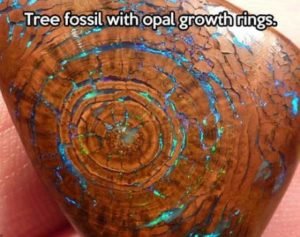
by Susan Dean | Feb 5, 2018 | Plants, Trees

Tree Exploration
The Tree Circus
Tree Circus Trees
Tree Structure
Odd and Unusual Trees
Tree Trivia
Tree Art
Treesearch
TREE HUGGING VALIDATED
Old Methusala The oldest Living Tree
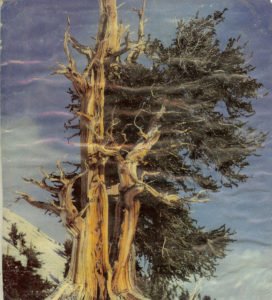
TREES are the oldest, largest, and most giving form of life on earth.
“A child who has never entered the living world of trees is deprived of his heritage as a child of the earth. But the child that carries the tree image greatly engraved in his memory and imagination is blessed because he is forever bound to the rhythms of the beautiful earth and orientated towards heaven. ” The Sign of the Tree, Meinrad Craighead
Trees are rooted in our past, our present and our future. They have been depicted as a pattern of ascent since ancient times. Some people believe in tree spirits and some people ascribe their origins to trees. The present tree may have been a companion to generations of your family! Trees are symbols of permanence and prosperity and sometimes planted to commemorate births and marriages.
Some of the gifts of trees are: medicine, food, fuel, books, furniture, paper, homes, and tools. Trees reduce noise levels, conserve water, clean the air, increase the humidity in dry climates, prevent erosion, fertilize the soil, create wildlife and plant diversity, decrease the amount of chemicals transported to streams, stabilize the climate, drink up carbon dioxide and give us oxygen to breathe. We are partners with trees through our breath in the exchange of carbon dioxide and oxygen.
About half the greenhouse effect is from the buildup of carbon dioxide in the air. If trees are cut down, they cannot remove carbon dioxide from the air and give us oxygen to breathe! Trees are the most important way to reduce the heat buildup on the earth’s surface. We reduce carbon dioxide levels by planting trees and protecting the ones we have.
We need laws to protect trees! Our ancient trees have been left to ill fate or cut down. In 1944 The American Tree Society warned that our forests were disappearing. The trees greatest enemy is man. We cut and take trees with no thought for the future. The indifference shown toward the cutting of trees and clear cutting of our forests is a mockery of respect for the environment.
Trees are unique and alive! A large tree can weigh as much as 3 tons, cover 2000 square yards, have ten miles of twigs and branches, pump several tons of water into the air, produce a new crop of leaves and fruit, and cover an half acre of trunk and branches with new bark
The dead trees are as valuable as the live trees. They offer perches, nesting places, homes, places to hide, and food for many kinds of life. Forty-nine mammals and eighty-five bird species live in dead trees. Cavities make them popular. Many insects live in dead bark. Dead trees enrich the forest by supporting the diversity of plant and wildlife. Managed forests, planted of a single tree species, are harvested before the trees age, dead trees are removed, and nature and wildlife are deprived of the noble purpose the dead tree serves.
Trees are joys in the heart! Nothing is more vital to life than trees. The tree embodies our universe, drawing sustenance from the four elements of the world and springing from darkness to light in a crown of glory! Trees never cause harm, but embody a natural kindness and generosity. Trees feed the land as water feeds the ocean. Our forest and trees are precious to us and essential to our health. Charity is the universal love for all creation. Walk a green shoes walk, help protect our trees, and be a world citizen!
“ The tree that moves some to tears of joy is in the eyes of others only a green thing that stands in the way. Some see nature as all ridicule and deformity . . . and some scarce see nature at all. But to the eyes of the man of imagination, Nature is imagination itself. ” William Blake 1799

